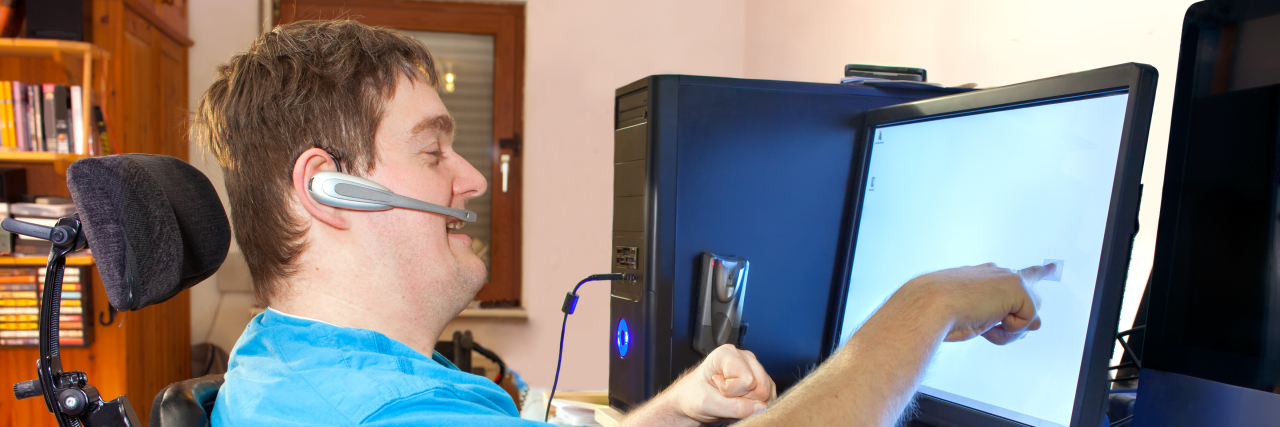An Overview of the Laws That Help Protect Students With Disabilities
This overview will answer the following questions
- What is the Individuals with Disabilities Education Act (IDEA)?
- What is Section 504 of the Rehabilitation Act?
- What is the American with Disabilities Act (ADA)?
While it would be nice to think schools would go above and beyond to help each and every student out of their own goodwill, federal guidelines are often what keep schools accountable when it comes to giving proper resources to students with disabilities. Here are three federal laws — the Individuals with Disabilities Education Act (IDEA), Section 504 of the Rehabilitation Act of 1973, and the Americans with Disabilities Act (ADA) — that you should be aware of if you or your child needs accommodations relating to a disability, chronic illness or mental illness.
Individuals with Disabilities Education Act (IDEA)
The Individuals with Disabilities Education Act (IDEA) provides rights and requirements to allow students with disabilities access to special education in American public schools. There are two primary purposes of IDEA. The first is to allow students access to free, appropriate public education. In this requirement, schools are supposed to locate and evaluate students who may have disabilities. The second purpose is to allow parents to have a say in their child’s education. One of these requirements includes that the parent or guardian must agree to the services their child receives. IDEA is the law which created Individualized Education Plans, or IEPs.
IDEA covers students from age 3 to when they finish high school or turn 21 — whichever one comes first. To be covered by IDEA, a student has to have one or more of the 13 following disabilities:
- specific learning disability (SLD)
- autism spectrum disorder (ASD)
- emotional disturbance
- speech or language impairment
- visual impairment
- deafness
- hearing loss
- deaf-blindness
- orthopedic impairment
- intellectual disability
- another health impairment
- traumatic brain injury
- or multiple disabilities.
Section 504 of the Rehabilitation Act
Section 504 of the Rehabilitation Act of 1973 (Section 504) is a national law which protects people with disabilities against discrimination. Section 504 has two main purposes in terms of disability services for students. The first is to make sure students have access to free and appropriate education. The second is to prohibit discrimination against people with disabilities for programs that receive public funding. Aptly named “504 plans” were created under Section 504 of the Rehabilitation Act.
Unlike with IDEA, students do not need to have specific disabilities to be protected under Section 504. There are no specific age restrictions pertaining to students with disabilities, which also makes it different than IDEA. Section 504 is often credited for helping pave the way for the American with Disabilities Act (ADA).
If you are interested in learning more about Section 504 in a comedic manner, check out this “Drunk History” retelling of how Section 504 came to be.
American with Disabilities Act (ADA)
The Americans with Disabilities Act (ADA) is one of the most important pieces of legislation in the United States when it comes to protecting people with disabilities. The ADA “prohibits discrimination against individuals with disabilities in all areas of public life, including jobs, schools, transportation, and all public and private places that are open to the general public.” It was signed into law in 1990. It may not be a surprise that it protects students as well. While ADA does not create education plans like IDEA or Section 504, it strengthens both of them.
Like with Section 504, people do not need to have specific disabilities to qualify for protection under the ADA. If a student is being discriminated against by not receiving suitable accommodations, this is grounds for complaint under the ADA. Another good part about ADA is how wide its scope is. For example, a kid who goes to summer camp over summer break will still be protected by ADA, even though they are not in school.
You can read Mighty contributing editor Karin Willison’s take on how far the ADA has come and where there’s room for improvement here. Contributors like Jessie Benash have also discussed their experience with the ADA and why they think guidelines need to be stronger to protect people, including students, with disabilities.
While these federal laws do play an important role in shaping how a student receives resources, it is important to check out state- and school-specific policies. In addition, while bullying policies do not directly address students with disabilities, it can be helpful to know state-specific policies when it comes to bullying. You can check out state-specific policies at StopBullying.gov.
Related articles
- Why the Trump Administration ‘Rethinking’ Special Education is Concerning
- Why Disability Accessibility Matters
- As the ADA Turns 29, We Still Have Work to Do
- Celebrating the ADA as Someone With Epilepsy
- A Sign Doesn’t Make It Accessible
Jump to resource guide 1 | 3 | 4 | 5 | 6 | College with inclusion programs for students with disabilities
Getty image by Horsche.

